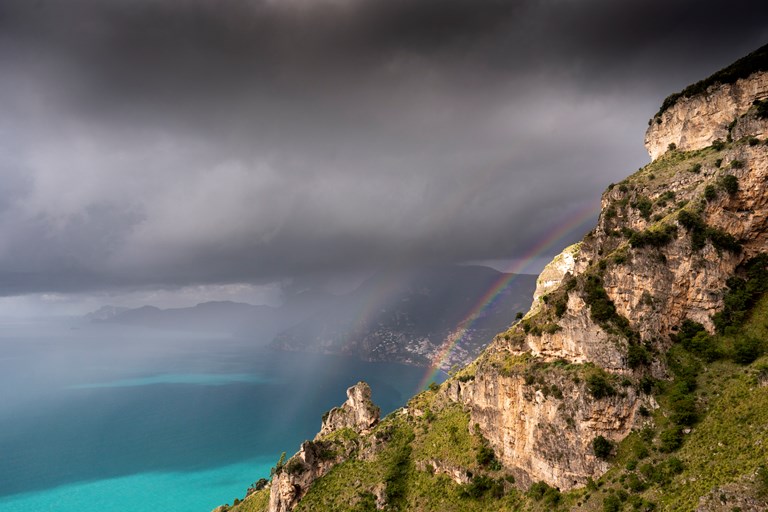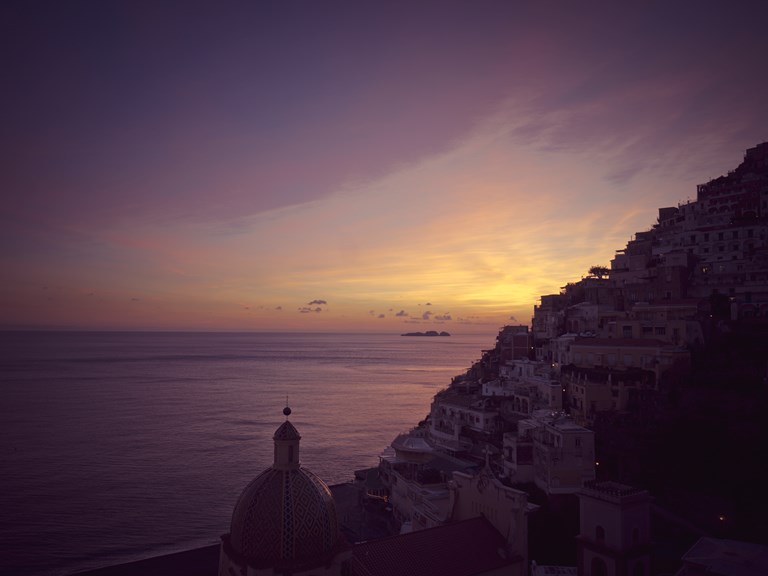PATH OF THE GODS: ORIGIN STORY
28.10.2022 BEST OF THE COAST
One of those who does is Dutch-born, Salerno-based activity tour operator Peter Hoogstaden. “Until the 1990s”, Hoogstaden points out, “the only walkers you’d meet on the Sentiero degli Dei were a handful of really serious Italian trekkers… out of season, you would often do the whole two-hour hike without seeing a single person”.
Back then, Hoogstaden had recently left his desk job for the European Commission in Brussels, based at the French Ministry of Environment, with a remit to develop a collaboration with Mediterranean-zone nature conservation areas. Not wanting to “end up as a bureaucrat”, as he puts it, he moved to southern Italy, where he became involved both with the already established Parco Nazionale di Abruzzo and the still under-developed sector of conservation areas and outdoor tourism in Campania, the region centred on Naples.
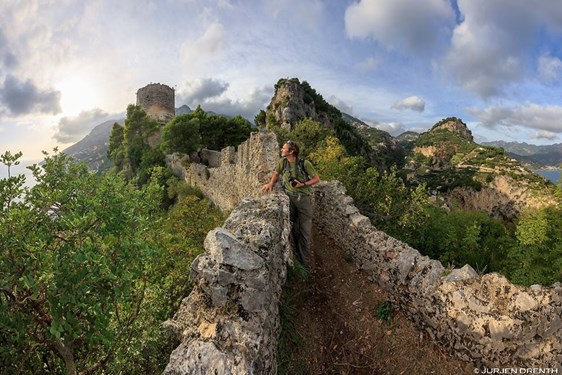
View
Believing that “if you’re planning to develop walking trails, you’ve got to get out there and walk”, he based himself in Agerola, then a small and sleepy agricultural town in an upland valley surrounded by the high peaks of the Monti Lattari. For centuries, Agerola had been known for its dairy farms. The prized fior di latte cheese made here was much in demand not only in Naples and the towns that dotted its bay to the south, but also on the Amalfi Coast. And the quickest way to get the cheese down to Positano and Praiano, returning perhaps with a basket load of fish or lemons, was on foot – via an ancient muletrack that afforded breathtaking views.
The first element of this muletrack’s current success – its name – was put in place not by some clever marketing executive but by 19th century politician and keen mountaineer Giustino Fortunato, who after walking it one day was so impressed by its lofty majesty that he baptized it “il Sentiero degli Dei” – the Path of the Gods. Over a century would pass, however, before this spectacular trail achieved the fame its name deserved.
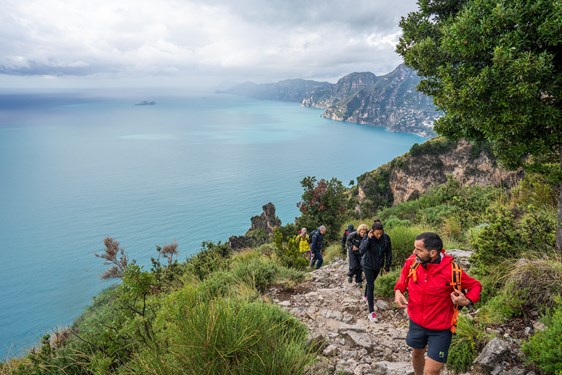
View
Hoogstaden takes up the story. “Towards the end of the 1990s I was involved with drawing up the Masterplan for Agerola in which, for the first time anywhere in southern Italy, we marked the ancient network of footpaths around the town and gave them protected status”. At around the same time, he bet the then mayor of Agerola, Tommaso Cuomo, that the following year he could bring at least 100 foreign outdoor enthusiasts to Agerola, provided a certain number of footpaths were cleared. “Everyone in Agerola thought I was mad”, Hoogstaden recalls. “There were only three hotels and one agriturismo in Agerola back then, and off-season they were usually empty”.
Contacting walking tour specialists such as the Dutch SNP, Exodus Travels from the UK and Chamina Sylva in France, Hoogstaden made good on his promise – and won the 100,000 lire (50 euros) bet by a large margin.
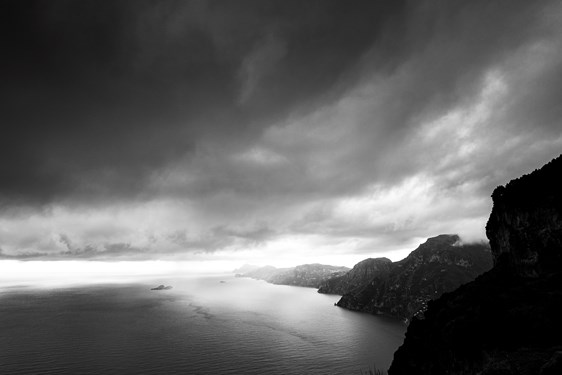
View
That first year, 1999, around a thousand outdoor enthusiasts descended on Agerola to walk, among other routes, the Path of the Gods. But not only: right from the beginning, Hoogstaden’s objective has always been to bring development through tourism to the whole area. Today, the number of hikers along the Path of the Gods, is far larger. In fact, he believes that, in the era of social media, “the Path of the Gods has become a victim of its own success. Don’t get me wrong – it’s still an amazing walking trail, especially out of season. But many of those who do it today have little experience of serious mountain trekking – which leads to accidents. And the sheer number of walkers on a single path puts a heavy strain on a fragile ecosystem”.
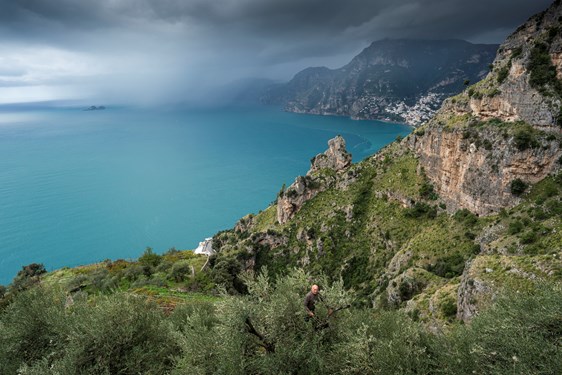
View
Early on in the rise to fame of the Path of the Gods, a US TV channel sent a crew to the Amalfi Coast to do a feature on the route. “Their schedule was crazy and in the short time they had available there’s no way I could get them up there from Positano with all their equipment”, Hoogstaden recalls. “So local guide Paolo Barba and I took them on another, equally lovely footpath above Montepertuso. They were just as happy… and still today you can find the footage online: they’re talking about the Path of the Gods, but none of what you see was actually filmed there!”.
There’s a serious lesson to be learned from this humorous anecdote, Hoogstaden believes. There really are hundreds of ancient footpaths and muletracks all over the Amalfi Coast that are just as beautiful as the Path of the Gods – but often almost entirely empty, perhaps because they lack the cool name.
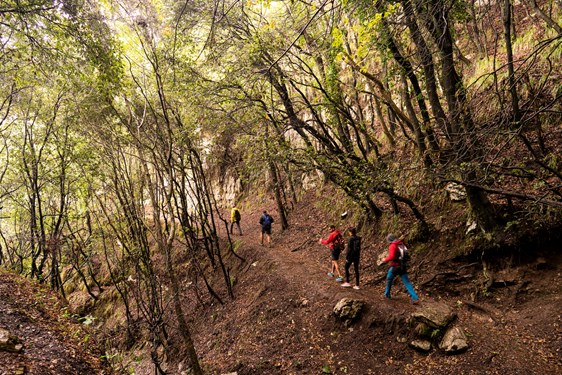
View
Passionate about the ancient pedestrian and pack-animal route network of the Amalfi Coast, not to mention less celebrated conservation areas like the Cilento National Park in southern Campania, the Dutch-Italian is today leading efforts to help visitors discover less well-trodden paths, like the spectacular ‘Alta Via dei Monti Lattari’ long-distance footpath, as well as unknown paths in the area of Tramonti, Maiori and Cetara. Through Salerno-based hiking tour specialist Genius Loci Travel, he now offers many different tours, from easy to challenging, along both the better-known trails and the hidden treasures of the Amalfi Coast and the rest of Italy. But he is also working with local administrations and park boards to restore lost or neglected trails – including a low-level balcony route between Praiano and Positano.
“In the end”, Hoogstaden affirms, “we’re not just talking about footpaths, we’re talking about collective memory. If an old route that was used for centuries is lost, so is part of a community’s history. When UNESCO added the Amalfi Coast to their World Heritage List in 1997 they did so because – as the motivation they wrote back then puts it – it “can rightly be defined as a landscape of outstanding cultural value, thanks to the astonishing work of both nature and humankind”.”
Le Sirenuse’s twice-yearly Dolce Vitality fitness retreat was inspired by the desire to make the network of ancient footpaths and muletracks above Positano better known. Maintained by local volunteers, they not only provide vigorous workouts and spectacular views, but also offer a glimpse into a side of Positano few visitors ever discover, a hardy mountain culture based on small-scale sustainable agriculture and foraging. The upcoming fall session is fully booked, but there are still a few places left on the Spring 2023 (19-25 March) and Fall 2023 (29 October-4 November) retreats.
Photos © Roberto Salomone except Peter Hoogstaden at Torre dello Ziro © Jurjen Drenth
Le Sirenuse Newsletter
Stay up to date
Sign up to our newsletter for regular updates on Amalfi Coast stories, events, recipes and glorious sunsets
